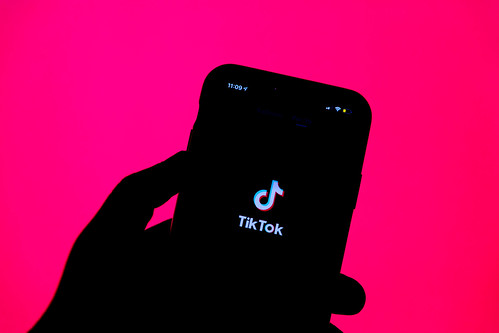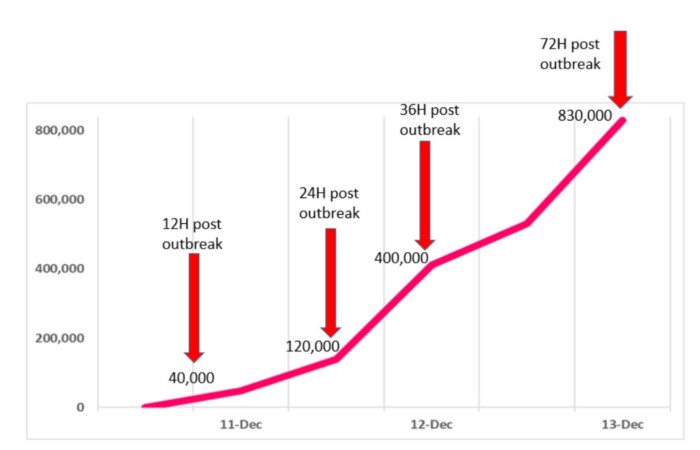
Amazing but true – the news agency Reuters used to have a dedicated journalist “in” Second Life. It wasn’t a success. Will the metaverse offer better? CC-licensed photo by Deryck Hodge on Flickr.
You can sign up to receive each day’s Start Up post by email. You’ll need to click a confirmation link, so no spam.
A selection of 9 links for you. A sort of look ahead. I’m @charlesarthur on Twitter. Observations and links welcome.
This is the last Overspill of 2021. Thanks for all the links, feedback and support. Back (spirits willing) on January 10, when we’ll have found out whether CES 2022 went ahead.
Last chance for charity time!
It’s nearly Christmas, which is a good time for giving. I’d suggest all or any of:
• Shelter (or equivalent in your country)
• National Deaf Children’s Society (or equivalent in your country)
• Wikipedia (it’s an invaluable, unique resource)
• the Internet Archive (ditto)
• any dog rescue centre. Dogs are a source of joy and inspiration: watch the adorable Lollipop and then try to deny that. Here’s Lollipop’s home.
The automatic muse • ROUGH TYPE
Nicholas Carr:
»
In the fall of 1917, the Irish poet William Butler Yeats, now in middle age and having twice had marriage proposals turned down, first by his great love Maud Gonne and next by Gonne’s daughter Iseult, offered his hand to a well-off young Englishwoman named Georgie Hyde-Lees. She accepted, and the two were wed a few weeks later, on October 20, in a small ceremony in London.
Hyde-Lees was a psychic, and four days into their honeymoon she gave her husband a demonstration of her ability to channel the words of spirits through automatic writing. Yeats was fascinated by the messages that flowed through his wife’s pen, and in the ensuing years the couple held more than 400 such seances, the poet poring over each new script. At one point, Yeats announced that he would devote the rest of his life to interpreting the messages. “No,” the spirits responded, “we have come to give you metaphors for poetry.” And so they did, in abundance. Many of Yeats’s great late poems, with their gyres, staircases, and phases of the moon, were inspired by his wife’s mystical scribbles.
One way to think about AI-based text-generation tools like OpenAI’s GPT-3 is as clairvoyants. They are mediums that bring the words of the past into the present in a new arrangement. GPT-3 is not creating text out of nothing, after all. It is drawing on a vast corpus of human expression and, through a quasi-mystical statistical procedure (no one can explain exactly what it is doing), synthesizing all those old words into something new, something intelligible to and requiring interpretation by its interlocutor. When we talk to GPT-3 we are, in a way, communing with the dead. One of Hyde-Lees’ spirits said to Yeats, “this script has its origin in human life — all religious systems have their origin in God & descend to man — this ascends.” The same could be said of the script generated by GPT-3. It has its origin in human life; it ascends.
«
GPT-3 is very likely to impose itself on more and more of our daily lives, even if we don’t see it (marketing material? Opinion articles? Adverts?), in 2022. Take note.
unique link to this extract
The world’s biggest offshore wind farm is up and running • Singularity Hub
Vanessa Bates Ramirez:
»
Two and a half years ago, the Hornsea 1 offshore wind farm started generating power. Located in the North Sea off the coast of Grimsby, England, it was completed in 2020, with 174 turbines and a generating capacity of 1.2 gigawatts. It was the biggest offshore wind farm in the world at the time, and now its sister site, Hornsea 2, has launched as well.
The site generated its first power over the weekend, and when complete, will have 165 turbines capable of generating 8 megawatts each, for a total of 1.32 gigawatts of electricity. According to Orsted, the Danish energy firm running the sites, Hornsea 1 and 2 will together be able to power over 2.3 million homes.
2.3 million homes in the UK are equivalent to far fewer homes in the US; Americans are serious energy hogs, with average annual electricity consumption per household in 2020 hovering around 10,715 kWh, almost triple that of the UK’s 3,731 kWh. We should be working harder to scale back on our giant appliances, around-the-clock air conditioning, and ever-ready hot water—but that’s a separate conversation.
Besides being the biggest operational wind farm in the world, Hornsea also takes the crown on another designation: it’s the farthest from shore, which means it takes a lot of cables to get the energy generated by those spinning blades into the national grid. Hornsea 1 sits 75 miles (120 kilometers) from shore, Hornsea 2 55 miles (89 km). The offshore cables feed into onshore cables, which terminate at a substation in Killingholme, a town about two hours’ drive from Manchester. Unlike their not-too-far-away floating neighbors in Scotland’s Hywind farm, Hornsea’s turbines are anchored to the ocean floor.
Despite its distance from shore, Hornsea’s location was chosen very deliberately, as wind speeds in the area average 16-22 miles per hour; for comparison’s sake, the top 3 windiest cities in the US get gusts of around 13 mph.
«
Linked to Hornsea One going live in September 2019. Lot of progress in two years. Can it help with electricity prices, which are still spiking as gas prices leap up? Another big one for 2022.
unique link to this extract
Intel apologizes after asking suppliers to avoid China’s Xinjiang region • WSJ
Liza Lin:
»
US semiconductor giant Intel apologized after setting off a social-media backlash with a letter asking suppliers to avoid sourcing from the Chinese region of Xinjiang, where the Chinese government has conducted a campaign of forcible assimilation against religious minorities.
In a letter to global suppliers, dated this month and published in several languages on its website, Intel called on its business partners to steer clear of the remote northwestern region of China, noting that “multiple governments have imposed restrictions on products sourced from the Xinjiang region. Therefore, Intel is required to ensure our supply chain does not use any labor or source goods or services from the Xinjiang region.”
By midweek, the letter had been singled out by irate Chinese social-media users and a nationalist state-run tabloid, denouncing Intel’s unwillingness to conduct business involving Xinjiang.
On Thursday, the Santa Clara, Calif.-based chip maker said its letter was written only to comply with US law and didn’t represent Intel’s stance on Xinjiang.
«
In other words, “our apology wasn’t a reflection of what we think.” US-China tensions (especially over Xinjiang) are going to be another source of tension for technology in 2022.
unique link to this extract
November 2008: Exclusive: why Reuters left Second Life, and how Linden Lab can fix it • Business Insider
Eric Krangel was assigned to “report” on Second Life, which your parents will explain to you was an early version of the metaverse:
»
For a year and a half, I reported under the byline “Eric Reuters” in Second Life, before settling in at my new home here at SAI.
So what happened? Is Second Life dying? No, but the buzz is gone. For all the sound and fury over recent price hikes and layoffs at Linden Lab, Second Life has a community of fanatically loyal users. Since Linden Lab derives its revenue from user fees, not advertisements, Second Life is much more likely to survive the Web 2.0 shakeout than most other startups.
It’s hard to say what, if anything, Linden Lab can do to make Second Life appeal to a general audience. The very things that most appeal to Second Life’s hardcore enthusiasts are either boring or creepy for most people: Spending hundreds of hours of effort to make insignificant amounts of money selling virtual clothes, experimenting with changing your gender or species, getting into random conversations with strangers from around the world, or having pseudo-nonymous sex (and let’s not kid ourselves, sex is a huge draw into Second Life). As part of walking my “beat,” I’d get invited by sources to virtual nightclubs, where I’d right-click the dancefloor to send my avatar gyrating as I sat at home at my computer. It was about as fun as watching paint dry.
«
His advice on how to improve things included:
»
Abandon the idea that Second Life is a business app. I wasn’t in Second Life to play, I was there on assignment for Reuters. The login server would crash. I’d try to reach sources, but Second Life’s IM window would hang on “waiting” all day when trying to figure out who was online. “Teleports” — the ability to move from point to point anywhere in Second Life — would stop working and I’d get locked out of my own office. These weren’t one-offs, they were my daily, first-hand, happens-all-the-time experiences. For all its bugs, Second Life is tolerable as a playground, but enterprise users will never and should never use it for business. Re-focus on the core mission: Keeping the hobbyists happy and converting potential recruits into hardcore (read: fees-paying) users.
«
So now we’re trying with enterprise users, but in smaller spaces. The question of whether this time round there is one unified metaverse (what Second Life tried), multiple interoperable ones or multiple incompatible ones (I’ll plump for the latter) might start to shake out in 2022. It’s going to be another centralised/decentralised argument.
unique link to this extract
Alexa is nagging you more because Amazon knows you don’t care about its new features • The Verge
James Vincent:
»
If you regularly use an Alexa device, you’ve probably been upsold by Amazon’s assistant at some point. Ask Alexa to carry out some basic task like setting a timer, and it will finish its response with a cheery “By the way, did you know I could [insert feature you’ve never heard of here].” As highlighted in a recent report from Bloomberg, this is because Amazon knows that users aren’t really getting stuck into the full range of Alexa’s capabilities.
Bloomberg’s report is based on internal Amazon docs, and features some interesting statistics about Alexa usage. Here are the ones we found most eye-catching:
• In 2020, Amazon determined that 25% of US households have at least one Alexa device, with this rising to 27% for Amazon Prime customers.
• Christmas is when a lot of customers buy new Alexa devices, but keeping people engaged can be tough. Per Bloomberg, Amazon found in some years that 15% to 25% of new Alexa devices were no longer active by just the second week of use.
• Last year, Amazon concluded that the market for smart speakers had “passed its growth phase,” and estimated it would expand only 1.2% annually in future.
• In 2018, Amazon projected that it would lose $5 on average per Alexa device sold, and that by 2028 it hoped this would be $2-per-unit profit. The company mainly wants to generate revenue from Alexa devices by using them to direct people to other Amazon services.
• Alexa devices with screens are used more: 74% of users who have an Alexa device with a screen use it weekly, compared to 66% of Echo users, and 56% of Echo dot owners. That suggests a problem with discoverability and usability for voice interfaces.
• In a planning doc from 2019, Amazon noted that Alexa users discover half of all the features they will ever use within three hours of activating a new device. For most users there are just three main use-cases: playing music, setting timers, and controlling lights.Taken together, these statistics don’t paint the rosiest picture for Alexa’s future.
«
As Benedict Evans once observed, the voice interface is as inscrutable as a blinking cursor in a terminal: there’s no clue what it can do, and it’s even worse than a command line at telling you when you get things wrong and what the right incantation is.
Expect a lot more ads on Echos. If it’s this bad for Alexa devices, probably even worse for Google’s – and more so for Apple (though it at least makes it back on the price). And this is like the Kindle: all the excitement, but in reality little use. (Also: turn off Alexa’s unwanted suggestions.)
unique link to this extract
Jack Dorsey goes on unfollowing frenzy after Web3 beef • Coindesk
Cheyenne Ligon:
»
To the uninitiated, it sounds like a bunch of rich guys arguing over how many angels can dance on the head of a pin.
But beyond Twitter drama, Block Inc. CEO Jack Dorsey’s public sparring with venture capitalists over “Web 3″ serves as a proxy for a long-running debate – not only about which cryptocurrencies are best but what they are good for.
The contretemps highlights important questions about what a truly decentralized internet would really look like, and what role different stakeholders have in building it. Dorsey, a longtime bitcoin aficionado, appears to have aligned himself with the so-called maximalists, a camp highly suspicious of any rival to the original cryptocurrency and any non-monetary application of the underlying technology.
Both sides of the Web 3 debate bemoan the current state of the internet, dominated by a handful of large platforms (not least of all Twitter, where Dorsey stepped down as CEO last month). But the maximalists distrust the Web 3 crowd’s use of crypto tokens as a way to fund such projects. The fact that VCs are big holders of these tokens is, to the maximalists, damning, a classic case of “meet the old boss, same as the new boss.”
Web 3 advocates, which include but are not limited to VCs, counter that a variety of approaches is needed to make good on the internet’s liberating promise; that tokens can align participants’ interests in a network; that Web 3 developers’ reliance on VCs is a perverse consequence of outdated securities laws; and that while Bitcoin was a bona fide breakthrough, its utility is limited and the purists are being shortsighted.
«
Fair explanation of the divide. This is going to be a very big topic in 2022.
unique link to this extract
Street Fighter II, The World Warrier [sic] • Fabien Sanglard
Sanglard is writing a series about Street Fighter II and the CPS-1:
»
One of my favourite anecdotes about Street Fighter II is Akiman’s account of an issue discovered shortly before shipping.
»
Just three days before the deadline, I discovered something horrible. I had made a mistake with the subtitle “World Warrior”, mis-spelling it “World Warrier.”
«
– Akiman, Lead graphic design on SF2 (translated by Shmuplation)
To fully understand the issue, we need to dig into how the arcade hardware works. The CPS-1 is a super tile drawing machine. It can draw a lot of tiles but cannot alter them. They are taken from the GFX ROM as they are and sent to the screen (although they can be flipped horizontally or vertically).
The GFX ROM and the 68000 instructions ROM as burned separately. The problem Akiman describe is that the GFX ROM had been burned but he could still make changes to the instructions.
But how could he fix the mistake if the artwork was set in stone at this point?
«
All that’s available is the tiles used to create all the characters in the game. A fun story (thanks Ravi for the link).
unique link to this extract
Porsche’s synthetic eFuel could make ICE cars as clean as EVs • Car and Driver
Sebastian Blanco:
»
Porsche’s eFuels are made out of CO2 and hydrogen and are produced using renewable energy. The final result is a liquid that an engine will burn the same as if it was gasoline made from crude oil, but an eFuel can be produced in a climate-neutral manner, at least in theory. Speaking at the recent launch of the new 911 GT3, Porsche vice president of Motorsport and GT cars Frank Walliser said the company will have its first small test batch—just 130,000 liters, or 34,340 gallons—of eFuel ready by 2022.
“Synthetic fuel is cleaner and there is no byproduct ,and when we start full production we expect a CO2 reduction of 85 percent,” Walliser told the U.K. publication Evo. “From a ‘well to wheel’ perspective—and you have to consider the well-to-wheel impact of all vehicles—this will be the same level of CO2 produced in the manufacture and use of an electric vehicle.”
One of eFuel’s big benefits is that you can pump it into a standard gasoline-powered vehicle without needing to make any adjustments to the engine. Porsche’s eFuel is not meant just for roadgoing vehicles, either. The newest Porsche 911 GT3 Cup race car can run on synthetic fuels, which Porsche said “significantly lowers CO2 emissions under racing conditions.”
“This technology is particularly important because the combustion engine will continue to dominate the automotive world for many years to come,” said Michael Steiner, a member of Porche’s executive board for R&D, said in a statement in September. “If you want to operate the existing fleet in a sustainable manner, eFuels are a fundamental component.”
Porsche is not the first automaker to investigate cleaner petroleum-substitute fuels, by any means. Audi produced its first batch of e-diesel in 2015, for example, and Bentley, Mazda, and McLaren have all said positive things about synthetic fuels. Meanwhile, Mercedes-Benz has taken an opposing stance, with R&D chief Markus Schäfer having told the U.K. publication Autocar in 2020 that e-fuel is not a viable option and that the automaker is focusing solely on electrification.
«
I’d really like to know more about this eFuel. Carbon dioxide isn’t hard to come by, but hydrogen? Normally only from electrolysing water or cracking oil. And what’s the process that creates a..hydrocarbon? All seems very roundabout.
unique link to this extract
Facebook may be dangerously unprepared for Libya’s upcoming presidential election, documents show • Rest of World
Vittoria Elliott:
»
Facebook is the most popular social platform in Libya, with more than 5 million users in a country of 7 million people, according to DataReportal, an organization that collects data around internet and social media usage around the world. The apparent HNEC [High National Election Commission of Libya] hack was just the latest example of how the platform has become a central focal point for disinformation, misinformation, and inflammatory speech leading up to the Libyan presidential election — the first in the country’s history.
Twelve experts, including social media and conflict analysts, told Rest of World that in the months leading up to the December 24th election, Facebook appears to be woefully unprepared to manage Libya’s complex combination of hate speech, polarized media, active conflict, and fragile electoral politics. Experts and analysts told Rest of World that they fear that the country might erupt into conflict at any time.
Earlier this year, Facebook labeled Libya a “Tier 3” country, meaning that the company has likely not been taking a proactive, “war-room” style approach to the upcoming election. Instead, the company would be taking action only in response to reports from users or “trusted partners,” civil society organizations that have a direct line to the company — an approach, experts said, that fails to reckon with the severity of the circumstances.
“[The] situation in Libya is illustrative of a bigger problem,” a social media analyst who requested anonymity due to the sensitive nature of their work around Libya, told Rest of World. “The system that Facebook has in place right now to determine which countries are high risk, is leading to an underinvestment in countries where the risks of violence are some of the highest.”
«
Sigh. Those elections are today. Consistent as ever, Facebook, despite years of warning.
Have a wonderful break. Back in two weeks.
unique link to this extract
You could always buy my latest book, Social Warming, about how social networks affect society, democracy, politics and journalism.
Errata, corrigenda and ai no corrida: none notified











